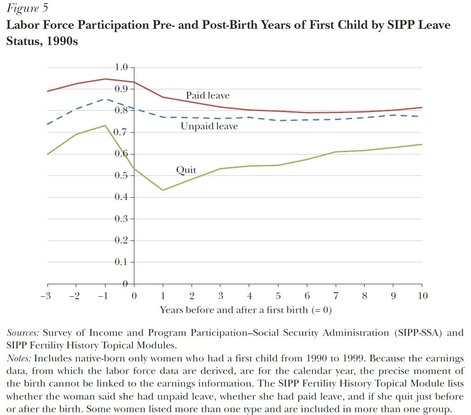|
Timothy Taylor on parental leave:
"Juhn and McCue write: The experience of Scandinavian countries produces an interesting perspective. While the expansion of family policies may have increased female labor force participation, much of the increase was in part-time work, and women in these countries were less likely to be in management and professional occupations than women in the United States. Indeed, the gender gap in Sweden is larger at the upper end of the earnings distribution, consistent with the notion of underlying factors leading to a “glass ceiling” that limits women from advancing. ... The persistence of children-related wage gaps in these countries with very generous family policies casts doubt on the notion that these policies constitute a panacea that will reduce the gender gap. It is plausible that adopting family policies and other programs that support working families as they go about the business of bringing up children ... may improve family and children’s well-being. But it is not clear that such policies narrow the gender gap in earnings. ... I [Taylor] was struck by this figure showing the labor force participation rates of US women before and after a birth, depending on whether they took paid leave, unpaid leave, or quit their job. The gap between paid and unpaid leave is not very large, while the gap between unpaid leave and quits is much larger. My interpretation would be that distinction between whether a mother has a job to which she wishes to return--and thus whether she takes unpaid leave or quits--is more important than the gap between paid and unpaid leave."
0 Comments
Your comment will be posted after it is approved.
Leave a Reply. |
AboutThis is my notepad. Archives
January 2018
|

 RSS Feed
RSS Feed
